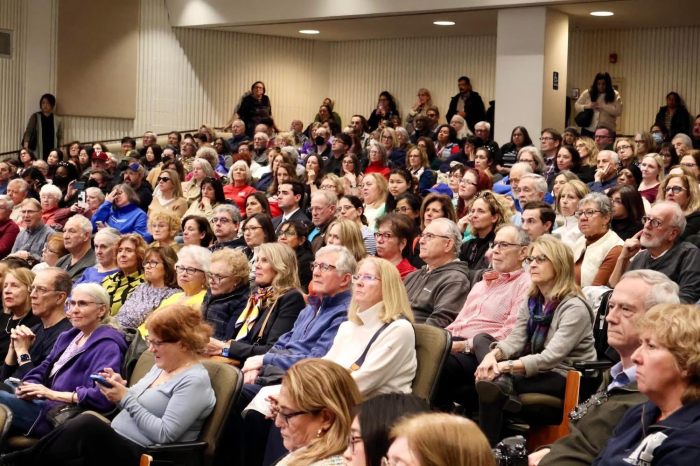It’s rare to see a teenager without a smartphone in hand.
Ninety five percent of teens ages 13 to 17 have access to a smartphone and 45 percent say they’re engaged in cyberspace almost constantly, according to a 2018 Pew Research Center study entitled Teens, Social Media & Technology. Many of those teenagers appear obsessed with social media apps such as Snapchat, Instagram and Twitter, but at what cost?
With alarming rates of teenage depression and suicide, some relating to cyberbullying — a tragic local example being the 2010 suicide of West Islip teen Alexis Pilkington — parents are finding themselves in unchartered territory.
Worried about the negative effects of social media on teens? Here’s what to look out for:
CYBERBULLYING
In online interviews with 813 teens between the ages of 13 and 17, plus 809 parents of teens, the National Cyber Security Alliance (NCSA) found 23 percent reported experience with online harassment or bullying and 24 percent said they’ve felt pressure to participate.
“Cyberbullying has become a mental health challenge for a lot of young people,” says Laura Campbell, director of education at Bellmore-based Long Island Crisis Center and trustee on the board of the Long Island Coalition Against Bullying in Farmingdale. “It is a very threatening thing to be a youth today and know that in a second, someone could have that kind of power to post something you did wrong.”
Signs of bullying include increased frustration especially following phone use, lack of sleep, sloping grades, anxiety, depression, and decreased self-esteem. Parents who notice these behavior changes should “reassure your child that you’re there to help and will include them in the process,” Campbell says.
Listen. Validate. Help them to feel empowered.
FOMO: FEAR OF MISSING OUT
For many teens, their world exists in social media, says Campbell.
“They always want to be connected and fear they’re missing out on something when they’re not,” she says.
This is why most teens get anxious when their phones are taken away. Like adults, teenagers often post highlights of their day, neglecting to disclose unpleasant experiences.
“It therefore puts unrealistic pressure on impressionable adolescents to compete and be more concerned about appearance and social status, rather than more connected and nuanced relationships,” says Dr. Julian Herskowitz, Clinical Psychologist Director, TERRAP Anxiety and PhobiaCare, Huntington.
He notes that cyberspace can be a lonely place.
“Much emotion and context is lost if a person communicates more electronically than in person and [this] can add to feelings of isolation, being different, or lowered self esteem,” he says.
This may lead to “the emptiness that can motivate drug use or abuse.”
Social media makes teens question who their real friends are.
“Sometimes people will like their posts and be friendly on social media but then when they see them in person, they’ll walk right past them and not invite them to a party,” Campbell says.
Posted party photos only deepen the wound.
INCREASED DISCONNECT
Twenty-two percent of teens say they often butt heads with their parents about screen time while 26 percent of parents admit arguing with their children about it, the NCSA study says.
“It is up to parents to learn about social media and how it fits into our kids’ lives so they can learn to use it wisely [and safely],” says Shane G. Owens, Ph.D., ABPP, psychologist and president, Suffolk County Psychology Association, Commack.
Today’s teens interact differently, often more through social media than face to face.
“This can keep kids from learning important social cues and rules for behavior,” Owens says.
There has to be a balance. Social media doesn’t have to be negative. With education, it can help to rekindle old friendships, gain new ones and connect with the world.

































